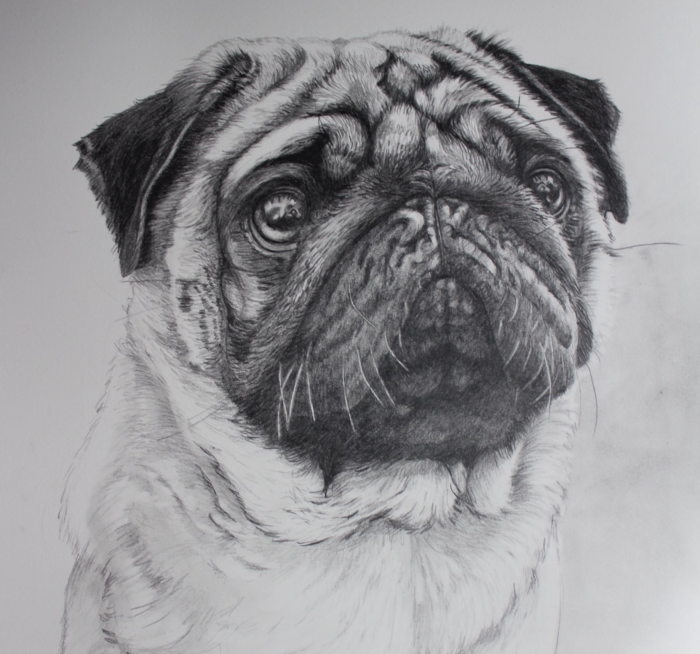
Describe a dog as having a “large, massive, and round head” to the average person on the street, and they may likely conclude that such a head belongs to a large, massive dog.
They would be surprised to learn that it actually goes on a dog that weighs just between 14 to 18 pounds.
The Pug’s AKC standard, however, calls for just that. From the standard: Head: The head is large, massive, round.
A large head is so important in breed type that a show judge we know says that Pugs with correct heads should be prioritized in a show ring. Having said that, he also adds that it’s often the hardest part of the breed to grasp for judges new to the breed, possibly because to fully comprehend a correct Pug head, one must also understand the Pug’s large eyes, short, blunt muzzle, ear set and bite, and how they all fit into a round head.
A bit of clarification may be helpful here to make visual imagery easier, and to that end, we mention the words, proportion and perspective because they are important to understanding the Pug’s head.
The head should not be so massive that the dog can’t hold it up (a little hyperbole there), but more to the point, it must be in balance and in proportion to the rest of the dog. There is a lot of skin on that head, and they create beautiful wrinkles that can challenge a judge who fails to feel the bones holding them up.
Perspective is critical, as well, and in using this word, we don’t mean “how one sees things,” but rather, where one stands when seeing them. A Pug’s head must be round and large when seen from the front, and not apple shaped, but from the side, a Pug’s face is flat. It’s neither upfaced nor downfaced, and it should sport a short square muzzle. A firm lip line, which is to say a well-defined border of the lips, should also be in balance to the natural contour of the Pug’s head.
Flat and round. All on the same head.
In a Showsight Magazine article from 2022, Patt Kolesar Stoltz shares a wonderful tip on how to view a Pug’s head. We paraphrase: Look at the dog head on, and imagine a halo around the dog’s head. Every part of the dog’s head should touch or fill the edges of the halo. The author gets more specific, and we urge you to read the rest of her piece here. In future posts, we’ll cover other important aspects of understanding the breed’s head, but for now, your takeaway should be: Large, round head that is balanced and in proportion to the rest of the dog.
*Ed: Note: Subject lines can be the hardest part of writing a post, but when writing this one, we immediately thought of “Big Head Todd and t
Image of “Kevin,” a Pug by Laila Olofsson appears with consent
https://www.facebook.com/Myanimalportrait
